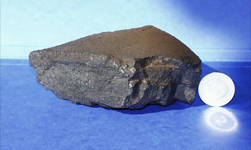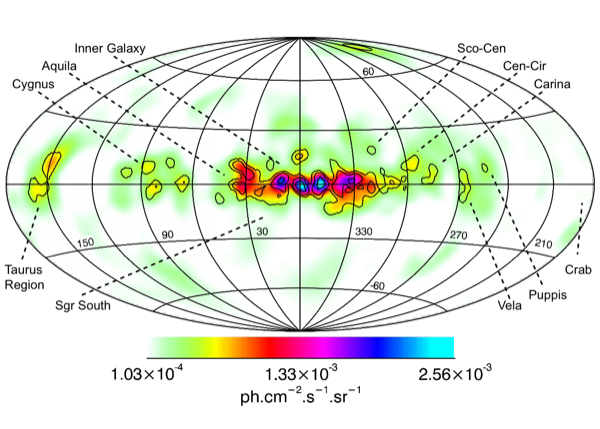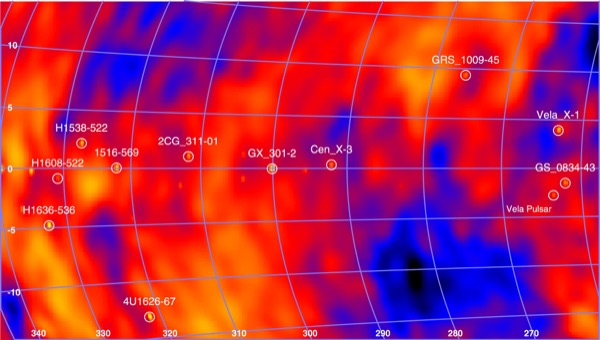
|
Cococubed.com
|
|
26Al and 60Fe From Supernovae Explosions |
Home
Astronomy research
Software Infrastructure:
MESA
FLASH-X
STARLIB
MESA-Web
starkiller-astro
My instruments
Neutrino Emission:
Neutrinos from de-excitation
Neutrino emission from stars
Identifying the Pre-SN
Neutrino HR diagram
Pre-SN Beta Processes
Pre-SN neutrinos
White dwarf pulsations:
12C(α,γ) & overshooting
Probe of 12C(α,γ)16O
Impact of 22Ne
Impact of ν cooling
Variable white dwarfs
MC reaction rates
Micronovae
Novae
White dwarf supernova:
Stable nickel production
Remnant metallicities
Colliding white dwarfs
Merging white dwarfs
Ignition conditions
Metallicity effects
Central density effects
Detonation density
Tracer particle burning
Subsonic burning fronts
Supersonic fronts
W7 profiles
Massive stars:
Pop III with HST/JWST
Rotating progenitors
3D evolution to collapse
MC reaction rates
Pre-SN variations
Massive star supernova:
Yields of radionuclides
26Al & 60Fe
44Ti, 60Co & 56Ni
SN 1987A light curve
Constraints on Ni/Fe
An r-process
Effects of 12C +12C
Neutron Stars and Black Holes:
Black Hole spectrum
Mass Gap with LVK
Compact object IMF
He burn neutron stars
Stars:
Hypatia catalog
SAGB stars
Nugrid Yields I
He shell convection
BBFH at 40 years
γ-rays within 100 Mpc
Iron Pseudocarbynes
Pre-Solar Grains:
C-rich presolar grains
SiC Type U/C grains
Grains from massive stars
Placing the Sun
SiC Presolar grains
Chemical Evolution:
Radionuclides in 2020s
Zone models H to Zn
Mixing ejecta
Thermodynamics, Opacities & Networks
Radiative Opacity
Skye EOS
Helm EOS
Five EOSs
Equations of State
12C(α,γ)16O Rate
Proton-rich NSE
Reaction networks
Bayesian reaction rates
Verification Problems:
Validating an astro code
Su-Olson
Cog8
Mader
RMTV
Sedov
Noh
Software Instruments
2026 AAS Journals
AAS YouTube
Listing of 500+ Author Videos
AAS Peer Review Workshops
Outreach Material
Education Material
Other Stuff:
Bicycle Adventures
Illustrations
Presentations
Contact: F.X.Timmes
my one page vitae,
full vitae,
research statement, and
teaching statement.

|
Models:
In this article, we explore the current abundances, fluxes, and spatial distributions of two key gamma-ray radioactivities, $^{26}$Al and $^{60}$Fe using recently calculated yields for Type II supernovae, along with models for chemical evolution and the distribution of mass in the interstellar medium. The estimated steady state production rates are 2.0 $\pm$ 1.0 M$_{\odot}$ / Myr for $^{26}$Al and 0.75 $\pm$ M$_{\odot}$ / Myr for $^{60}$Fe. This corresponds to 2.2 $\pm$ 1.1 M$_{\odot}$ of $^{26}$Al and 1.7 $\pm$ 0.9 M$_{\odot}$ of $^{60}$Fe in the present interstellar medium. Predictions for the $^{60}$Fe mass distribution, total mass, and flux map are given, in particular a $^{60}$Fe / $^{26}$Al flux ratio of 0.16 $\pm$ 0.12.

26Al profile for a 25 Msun model |

60Fe profile for a 25 Msun model |

26Al & 60Fe profiles together |
|
Observations:
The gamma-ray lines of 60Fe were measured by Smith (2004) using RHESSI and then by Wang et al (2007) using INTEGRAL. Both observations yield an $^{60}$Fe / $^{26}$Al flux ratio of 0.17 $\pm$ 0.05. Bouchet et al (2015) refine the INTEGRAL estimates to 0.14 $\pm$ 0.1.

RHESSI 26Al measurement |

RHESSI 60Fe measurement |

Integral 60Fe measurement |

INTEGRAL 2015 map |

Integral Map Zoom |
|
Experiment:

60Fe decay scheme |

60Fe lifetime measurement |

26Al(n,α) measurement |

26Al(n,p) measurement |

60Fe(n,γ)61Fe cross section |
|